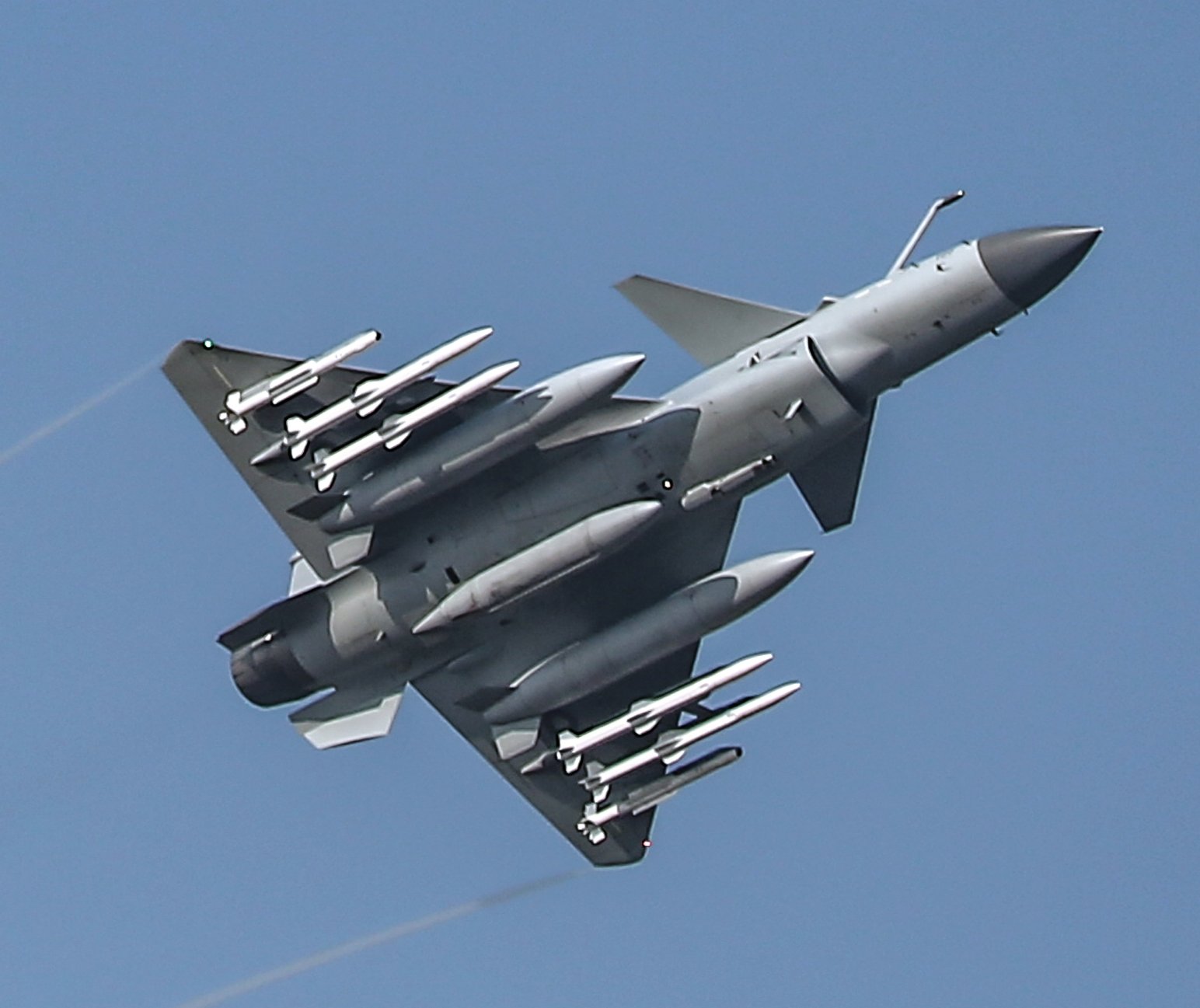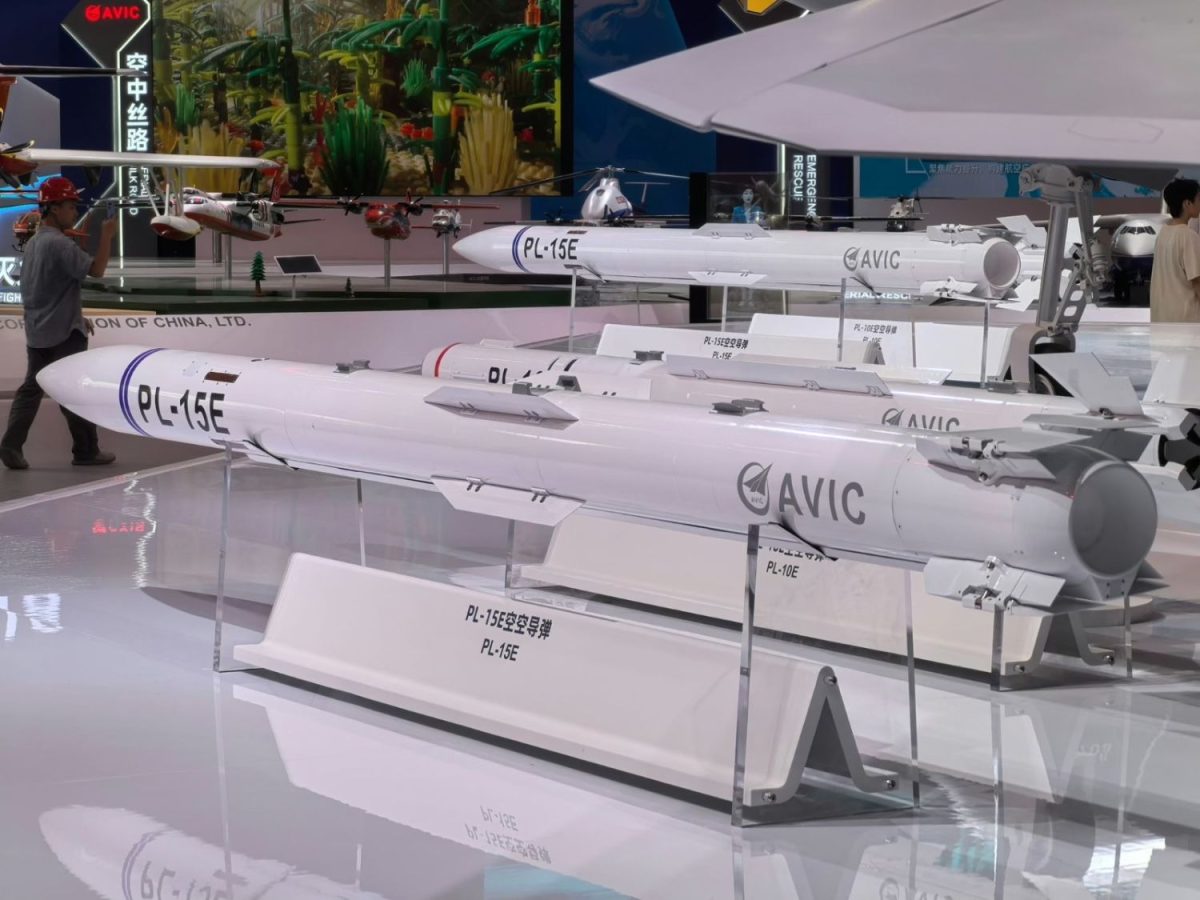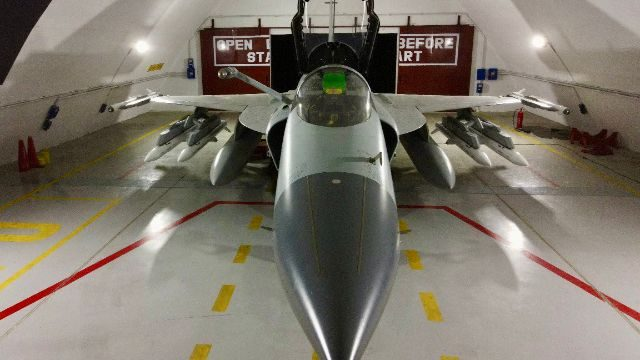Flawless Kill Chain: Pakistan’s Networked Strike Took Down Indian Fighter, Says U.S. Analyst
Michael Dahm, Senior Fellow at the Mitchell Institute for Aerospace Studies, noted in an interview with Air & Space Forces Magazine that Pakistan's operational ability to establish a coherent “kill chain” under combat conditions has emerged as a defining feature of its air warfare doctrine.
(DEFENCE SECURITY ASIA) — In a dramatic shift that has reverberated through strategic circles in South Asia, a leading American aerospace analyst has highlighted Pakistan’s successful integration of its Chinese-supplied weapon systems and radar networks as a critical factor in its recent air superiority over India.
Michael Dahm, Senior Fellow at the Mitchell Institute for Aerospace Studies, noted in an interview with Air & Space Forces Magazine that Pakistan’s operational ability to establish a coherent “kill chain” under combat conditions has emerged as a defining feature of its air warfare doctrine.
According to Dahm, “Pakistan is capable of integrating ground-based radars with fighter jets and airborne early warning aircraft,” a statement that underscores the growing operational sophistication of the Pakistan Air Force (PAF).
He added, “The Pakistani Air Force deployed… ‘A’ launched by ‘B’ and guided by ‘C’, hitting its intended target,” referencing a detailed May 12 report by China Space News, a publication closely affiliated with China’s defence-industrial complex.
The success of this kill chain, Dahm explained, is less about platform-versus-platform comparisons and more about how well each element—from sensor to shooter—is fused into a networked, real-time engagement loop.
In modern high-velocity conflict environments, where milliseconds can determine mission success or failure, the concept of the kill chain—an end-to-end cycle of detection, identification, tracking, targeting, engagement, and battle damage assessment—has become the heartbeat of 21st-century military operations.
Each stage of the kill chain is now supported by a vast architecture of ISR (Intelligence, Surveillance, and Reconnaissance) assets, satellite links, high-speed data networks, and increasingly autonomous fire-control systems driven by artificial intelligence.

In the context of the Pakistan-India confrontation, Dahm believes the sequence likely began with a ground radar or air defence system detecting an Indian Air Force aircraft entering contested airspace.
The radar cue was then transmitted to a forward-operating J-10C, Pakistan’s newest 4.5-generation multirole fighter acquired from China, which promptly launched a long-range beyond-visual-range (BVR) missile toward the target.
Guidance during the missile’s midcourse phase was reportedly handled by an airborne early warning and control (AEW&C) platform—most likely the KJ-500—using encrypted datalinks to adjust missile trajectory for maximum probability of kill.
“It was a long-range, Beyond Visual Range shot, likely using the export variant PL-15E,” Dahm said, referring to one of China’s most formidable air-to-air missile systems, now fielded by both China and Pakistan.
According to Pakistani defence sources, one J-10C is believed to have successfully downed an Indian Air Force Rafale from a distance of 182 kilometers using a PL-15 missile—what some defence observers have called the longest recorded air-to-air kill in military aviation history.
While independent verification of the kill distance remains elusive, the PL-15 missile—developed by the China Airborne Missile Academy (CAMA)—has emerged as a strategic equalizer to Western analogues like the AIM-120D AMRAAM and the European Meteor.
With its dual-pulse motor and active radar seeker, the PL-15 is capable of engaging agile airborne targets well beyond 200 kilometers, placing it firmly in the elite category of long-range BVR munitions.

The kill chain demonstrated by Pakistan mirrors the U.S. military’s Combined Joint All-Domain Command and Control (CJADC2) doctrine, a next-generation warfare concept designed to unify land, air, sea, space, and cyber assets into a seamless decision-making web.
“If and when we learn more about the specific engagement details, it may reveal how well Pakistan has achieved systems integration—especially when compared to India’s fragmented approach,” Dahm said.
He also noted that Pakistan has likely converted some of its Chinese-supplied AEW&C aircraft into dedicated electronic warfare (EW) platforms, though it remains unclear whether electromagnetic manipulation played a role in the recent engagement.
Dahm cautioned against simplistic narratives that pit Chinese hardware directly against Western systems, stating, “What does this say about Chinese technology versus Western technology? Probably not a whole lot.”
“But it probably says a lot more about systems of systems, about training, about tactics … about all of those difficult-to-quantify things,” he emphasized, arguing that organisational cohesion and tactical doctrine often matter more than raw specifications.
Dahm also highlighted the structural disadvantage faced by the Indian Air Force (IAF), which, despite its numerical advantage, operates a fleet composed of disparate technologies sourced from France, Russia, Israel, and domestic programs—each with different data architectures, communication protocols, and EW systems.

India’s Platform Diversity: Strategic Asset or Tactical Liability?
The IAF’s frontline inventory includes French Rafales, Russian Su-30MKIs and MiG-29s, Anglo-French Jaguars, Indian-built Tejas fighters, and Mirage 2000s—all running incompatible avionics and fire-control suites.
This fragmentation complicates real-time data sharing, sensor fusion, and cross-platform targeting—a core requirement for any fully functional kill chain in modern air warfare.
Even basic tactical datalinks are non-standard, with Russian Su-30MKIs and French Rafales requiring third-party integration modules to communicate in real time, causing latency and vulnerability in time-sensitive operations.
The use of diverse missile ecosystems—AIM-132 ASRAAM, R-77, Meteor, Astra—further adds to the logistical and targeting complexity, requiring separate maintenance, storage, and command protocols.
This diversity, once viewed as a hedge against over-dependence, is increasingly becoming a structural liability in an era where speed, automation, and interoperability dominate the battlespace.
India’s air doctrine still lacks a fully digitized combat cloud architecture, making it harder to coordinate multi-platform, multi-domain operations with the same speed and precision as adversaries like Pakistan or China.
Pakistan’s Streamlined Airpower: A Template for Networked Warfare
Pakistan, in contrast, has adopted a more focused and integrated strategy, aligning its air combat doctrine around platforms sourced predominantly from China and the U.S., resulting in minimal compatibility friction.
The JF-17 Thunder and J-10C both employ Chinese-made AESA radars, EW systems, and datalinks that allow seamless information exchange with KJ-500 AEW&C platforms and ground-based radar networks.
This homogeneity allows Pakistan to operate a streamlined “sensor-to-shooter” loop with minimal latency—detection from radar, cueing by AEW&C, and immediate engagement by fighters—all linked within the same electronic warfare and data-sharing architecture.
Such a model enables not just faster reaction times, but also greater survivability and situational awareness for frontline pilots and commanders.



U will find all of this launched by a type bullshit from American and chinese people as they r targeting the buyers for their systems gifted to pakistan however such advanced capable airforce of pakistan failed to provide even one satellite image of any damage caused to india .China being heavily involved in this theatre do anyone think would miss the opportunity to provide pakistan any sort of proof to rub salt into india but no they haven’t that’s because there wS no damage
@Reeturaj: When will you guys come out of your Delulu. The article doesn’t talk about damage to any ground infrastructure but air to air engagement in which the PAF shot down 6 of your jets. All the proofs in terms of pictures and videos were shared by local Indian people. Investigative journalism by worlds leading news and media agencies like Reuters, Bloomberg, NY Times, Washington Post and even Frances State Media confirmed the IAF losses. Also your CDS has admitted losses and that your Air force was grounded for 48 hours after suffering those losses on May 7.
As for damage to your airbases, again your own armed force Colonel Sofia Qureshi in the presser confirmed damage to atleast 4 bases.
@sherry Air superiority? Right? My god .May almighty allah give you enough wisdom my man Indian’s are living in reality but you guys just want to win against India so bad that you don’t know anything that is practically or logically right. For your information all the strikes happened in pakistan were done by Air force only using Bhramos air missile.so yeah our force was not grounded at all and it’s out of your capabilities to think of it . If you can’t understand a single thing that’s not our fault to make you come out of your delusion. But for making your life easy let me give you an example. Suppose there is a cricket match be India and Pakistan and your team played good 😂 (never gonna happen against India but again it’s an example) and when India started to bat you guys took wicket of rohit sharma, shubhman gill and just like the saying old habits die hard pakistan began to think that they won the match and then came virat kohli and usne krdi tumhari aesi ki tesi tum cricket nai jeet pae salo tatti jaise air force se india ko harane chle . NEEND SE JAAGO AND STOP PROPOGATING LIES . This post is as fake as your cricket stories against India . in the end AA BETE TUJHE DETA HU M CHOCHO.
The article should serve as an eye opener,instead of negative reaction.There is an element of truth that we lack discipline in whatever we do.There is more often than not,a piece meal approach with the result the end result suffers.There is a lot of interference in deciding important matters which are best left to the experts to decide.The result is half baked things resulting in chaos and failures.
The pseudo patriots will not like the comments and they are the worst enemies of progress of our country.
If this was a show of Pakistani air superiority, I wish it would stay like this for the next 1000 years….. That way we can keep bitch slapping them and they can keep going on and buying more crap. It’s good for us, we’re getting free target practice.
We, as Pakistanis thank Allah and humbly feel satisfied at the skills of our PAF, which have been confirmed by International Defence experts. Indians on the other hand do not face the facts. They keep on bragging and claiming success in the war.